A look at Windows 8 Tablets running on TI, Qualcomm, Nvidia, AMD and Intel silicon
by Brian Klug on September 14, 2011 9:00 PM ESTThis afternoon (and yesterday) we had a chance to meet with a number of SoC vendors who have partnered with Microsoft for Windows 8. Each of them has their own individual reference tablet running Windows 8, and today we had a chance to survey the landscape and get photos of all the tablets. We started with ARM, then looked at x86 based tablets. Of course, the real goal with Windows 8 is to abstract as much of the difference between these two platforms away.
Unfortunately, all of the ARM vendors were required to keep their tablets under glass and out of the way of physical contact per Microsoft instruction. Microsoft isn't ready to show off the ARM version of Windows 8 for a variety of reasons at this point (at least without a Microsoft rep. present), but we still got a chance to at least take a look at what there is now. Microsoft is encouraging tablet makers to target either a 10.1" or 11.6" form factor with 1366x768 resolution (ed: Metro will require 1024x768 as a minimum, so 1280x720 displays don't meet Microsoft's requirements).
Texas Instruments
First up is TI, whose development platform was demoed playing back the 1080p30 H.264 baseline video shown in the keynote fluidly in windows media player with a split-screen view. One tablet displayed the start menu, another displayed two split screen games. TI's development platform as shown right now is running on OMAP 4430, which again consists of two ARM Cortex A9s at 1.0 GHz and PowerVR SGX 540 graphics. Windows 8 won't launch on OMAP 4430, however, instead it'll launch on the more powerful OMAP 4470 platform with PowerVR SGX544 graphics and a 2D display compositor. The reason is partly due to SGX544 having full Direct3D 9.3 compliance, partly because it's an all around faster platform. I'm told that right now there's some Direct3D emulation going on as well for all the SoCs that don't support Direct3D 9.3.
I also recorded a short video showing the TI Windows 8 tablet in action.
Qualcomm
My next stop was Qualcomm, whose current development tablet runs on an MSM8660 SoC, which consists of two scorpion cores and Adreno 220 graphics. Qualcomm took the tablet out of the glass box for us and showed a quick demonstration of the start menu scrolling back and forth, and the IE10 mobile view working and scrolling around.
Unfortunately we weren't allowed to shoot video of the tablet while that demo was running, but we did grab some photos of the tablet without the glass box. Performance on the start menu looked to be above 30fps the whole time but not buttery smooth like the x86 tablets we've seen so far.
Just like TI, Qualcomm won't go to market with the SoC they're demonstrating Windows 8 working on today, instead they'll use the more powerful dual core Krait MSM8960 at first and quad core Krait APQ8064 later on. Dual core krait SoCs (eg 8960, 8270, 8260A) come with Adreno 225, quad core krait (APQ8064 and others) come with Adreno 320, both of which are Direct3D 9.3.
NVIDIA
We've seen NVIDIA's Kal-El quad-core A9 based tablet a few times now, and found it out on the floor, also behind glass. Unlike the other vendors, NVIDIA hasn't said anything about going to market for Windows 8 with anything but Kal-El, and I don't see any reason why they should either.
The Kal-El development tablet was seated in a nice looking dock with what looks like one USB 3.0 port and a full size HDMI port.
AMD
Switching over to the x86 camp, we have AMD, who showed us two tablets running on Brazos - the Acer Iconia Tab W500 and MSI WindPad 110W, which use a C-50 and Z-01 APU, respectively. Displays on these are 1280x800 and support capacitive touch just like you'd expect for Windows 8.
Both the MSI WindPad and Iconia Tab felt snappy and responsive running the same Windows 8 Developer Preview build that we've used on the Samsung developer hardware. Subjectively, the WindPad's capacitive panel was more responsive and less prone to errant touch recognition than the Iconia, though both were more than useable with Windows 8.
Intel
Last but not least is Intel's own development tablet, which is running an unnamed 32nm SoC. Intel was suspiciously silent about which particular SoC was inside this device, and you'll notice that it too is locked down in a plastic box, lumping it squarely in the next-gen SoC category for Microsoft.
It's possible this is Medfield, it's also possible this is some 2nd gen 32nm Atom SoC. Hopefully we'll find out more as Windows 8 starts getting closer to launch.


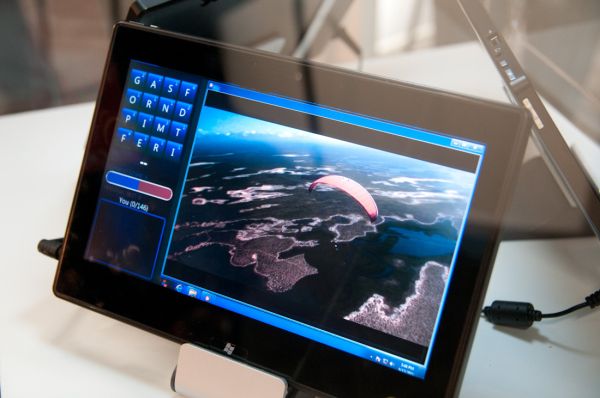
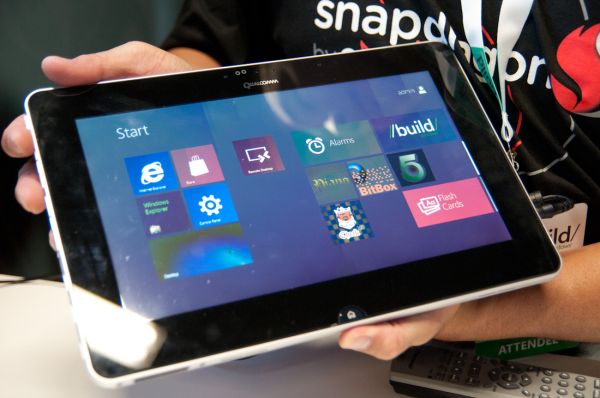
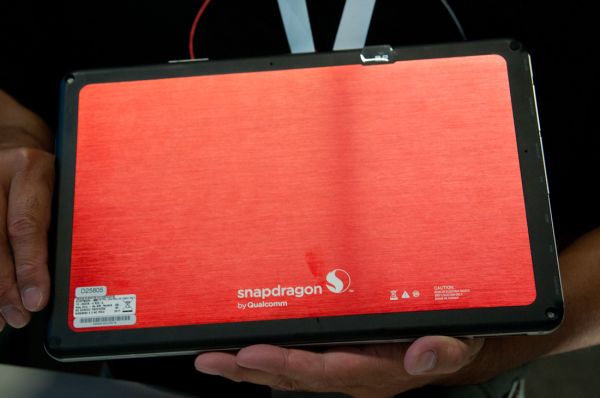
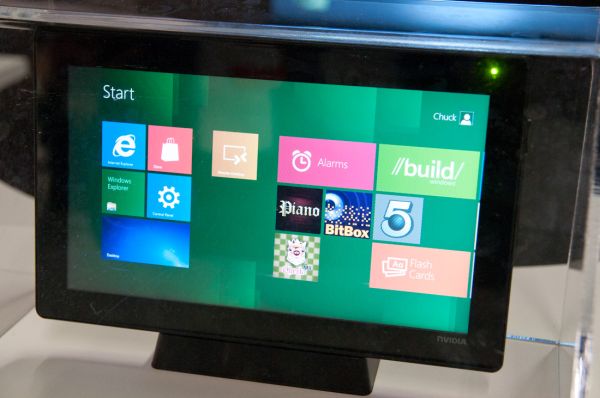
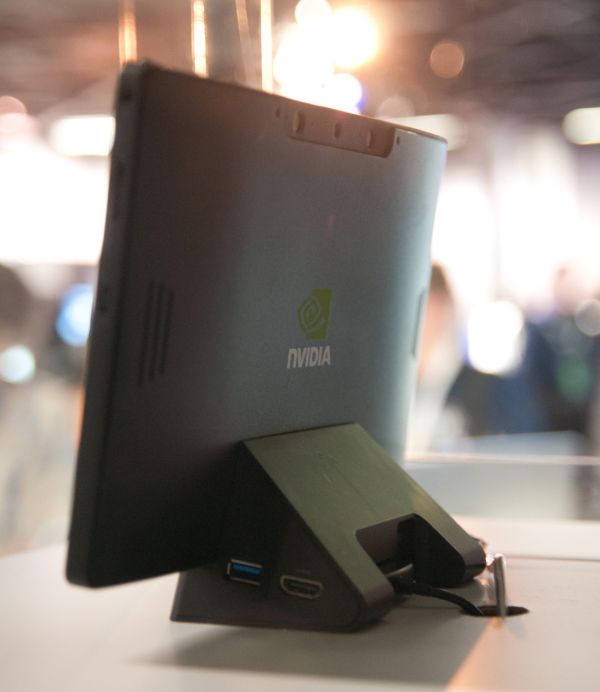
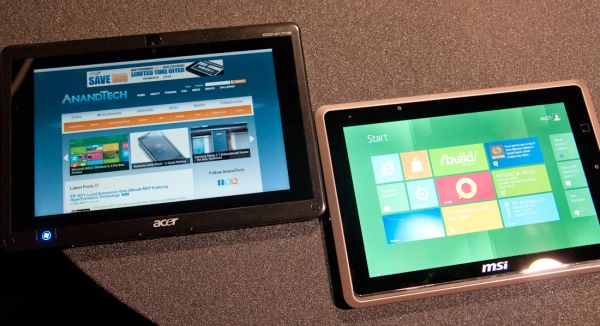
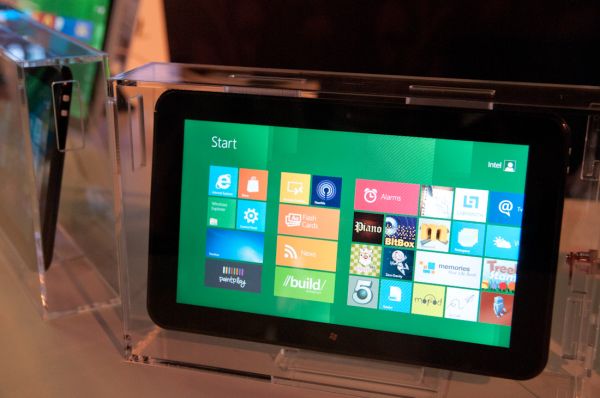














92 Comments
View All Comments
nafhan - Thursday, September 15, 2011 - link
"Windows 8 will allow you to run Windows PROGRAMS"Careful there... Windows 8 ON X86 will allow you to run Windows programs. My understanding is that the ARM version of Windows 8 (the version with only the Metro interface) will only run Windows 8 programs. That is, no legacy mode on ARM.
Anyway, Win 8 plus a Z-01 successor sounds pretty awesome.
sviola - Thursday, September 15, 2011 - link
You are right, but any Windows program develped using .NET can be easily "recompiled" to run on arm.UrQuan3 - Thursday, September 15, 2011 - link
I hope so, I was very happy to find that Visual Studio has simplified 64-bit programing to the point that all you do is change a drop-down from 'x86' to 'x64' and poof, it's 64-bit, optimizations and everything. (assuming you've written nutral code)Make something that simple for ARM development and we may even see games shipped for both.
steven75 - Thursday, September 15, 2011 - link
"Windows 8 will allow you to run Windows PROGRAMS, which are far more useful than Android Apps. Quickbooks, custom SQL databases, 3DStudioMax, Adobe CS, the list goes on why Windows has already won the profitable business-platform."Yet NONE of those apps will run on ARM, which is what Windows 8 tablets will be using.
Unless you pay $1,500 for x86, but in that case, why not just buy a Windows Tablet PC today?
Fritzr - Sunday, September 18, 2011 - link
So you've already checked in with those publishers and verified their refusal to develop Windows on ARM applications?You are correct though ... no Win7 code will run on Win8 for ARM. Are you ready to back up your conclusion that these companies do not plan to sell native Win8 sortware?
Gnarr - Thursday, September 15, 2011 - link
I have spent the last two days running the Win8 DevPrev and I must say that I'm not as impressed as I thought I would be. I really love Win7, but 8 just failed to impress me.I still like Ubuntu 11's approach more than Windows8 with metro.
Gnarr - Thursday, September 15, 2011 - link
and of course I know that this is a pre beta and that it will improve (probably) alot, but this release just doesn't cut it for me.soliozuz - Friday, September 16, 2011 - link
I think he means more of having the choice to run what you want as opposed to running something entirely different.Pirks - Friday, September 16, 2011 - link
"you have three options in the tablet-world: Windows 8, Android and Playbook"Fixed for you
fteoath64 - Saturday, September 17, 2011 - link
Only Win8 and Android for tablets ?. Not quite since we have no idea what the battery life is on the same tablet for Win8. I would not hold up much for it as it will likely 50%-60% LESS battery life, this would relegate it to much bigger tablets (11inch and above). All of which are way too big and way too heavy. A lightweight 9-10 incher is pretty much the norm now and with 2X or more performance with similar battery life, Android will lead the pack for sure. Yeah, iPads will lead parallel track until such time as Android becomes way more capable than it. The quad-core A9s will make this difference.